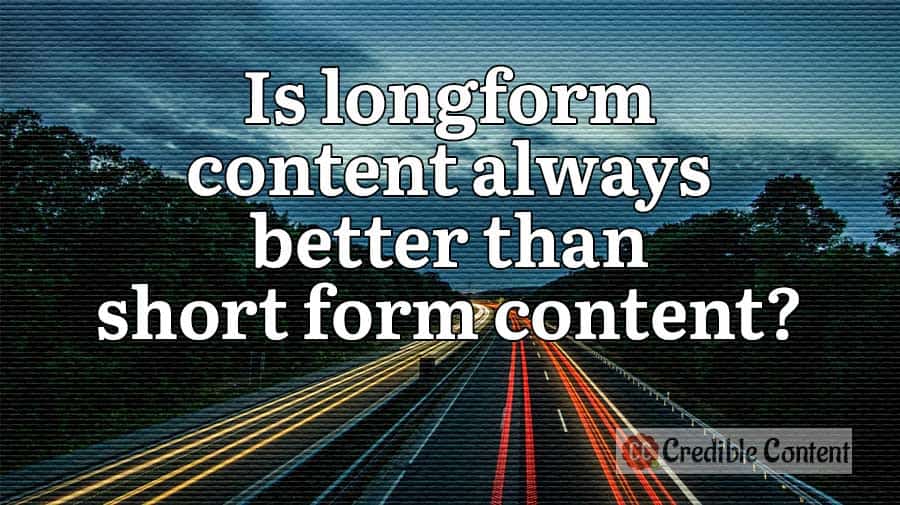I have multiple times written about the benefits of longform content.
You may like to read The difference between long form and short form content
Longform content is very long blog posts and articles comprising of at least 2500 words, or more.
Medium-sized blog posts consist of webpages and blog posts having more than 1000 words and less than or equal to 2500 words.
Various SEO plug-ins will tell you that anything less than 1000 words isn’t good for SEO.
Is it really so?
This Content Marketing Institute blog post says that not every piece of content needs to be longform content.
The author of the above post rightly says that not every topic requires 2000 words.
Suppose, I want to explain to you what is longform content; do I really need 2000 words to explain what longform content means?
I can explain it in 200 words, or even less.
How do you decide how long your blog post or web page should be?
You can decide this by considering what sort of information will be useful to your readers.
If you write something like “15 tips on creating highly effective SEO content”, then, while explaining these 15 tips, you may go beyond 2000-3000 words. This is because you will be talking about 15 topics or 15 tips.
I have seen on many blogs that they unnecessarily go on throwing around statistics from scores of blog posts and articles just to inflate the number of words.
This can be exhausting for the readers. Even I find such articles off- putting, especially when I’m looking for some quick information to use.
Best thing to do is, create a roadmap for your blog post. If possible, use a mind mapping tool. Keep on adding points till you feel that they’re going to be useful to your readers. The moment you feel that a particular section is not going to be useful, remove it. It is not going to adversely affect your SEO.

